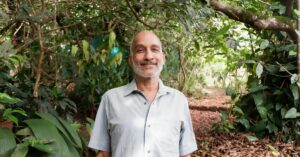IFS Officer Revives 66 Himalayan Springs to Help 1 Lakh People in 23 Villages
Setting a benchmark in water conservation, IFS officer Dharam Singh Meena and his team have revived 66 Himalayam springs, helping 23 villages in Uttarakhand’s Tehri Garhwal
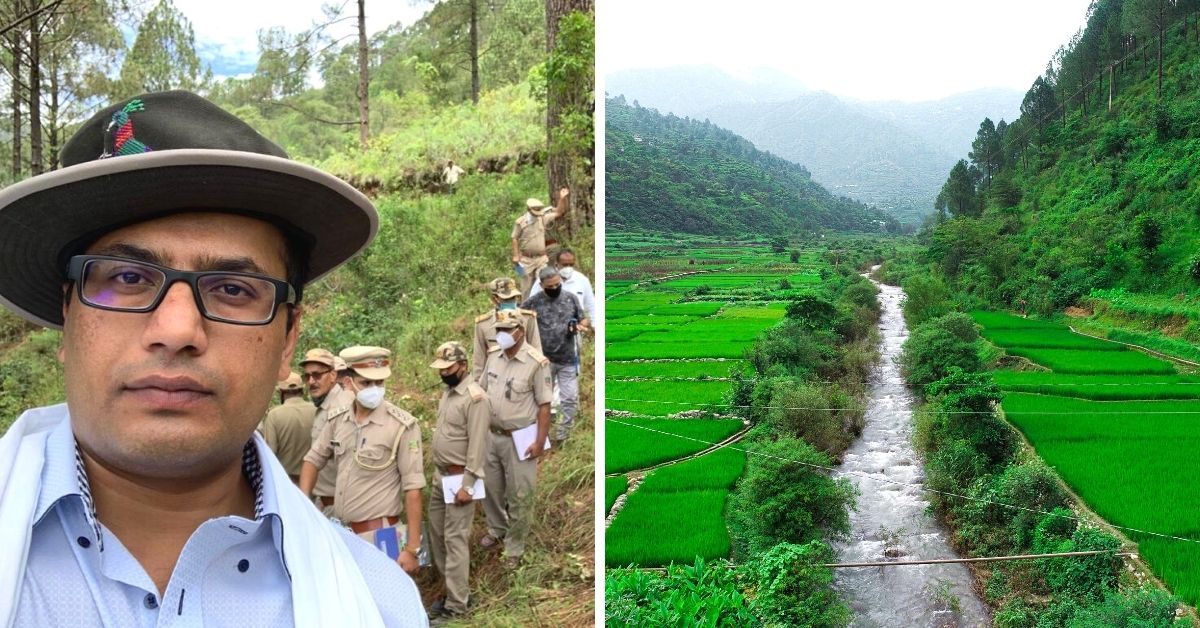
Springs, a primary water source for villages in Uttarakhand and the Himalayan sub-continent, are vanishing resulting in loss of income and migration. The disappearance of these precious water sources is due to erratic rainfall, mainly due to climate change. The water shortage is also because of the change in land use patterns owing to rampant development. The over in the region has affected the hydrogeology of the springs.
The worsening situation faced by the locals did not go unnoticed by divisional forest officer Dharam Singh Meena.
“I took charge of the position in May 2014, and I came across information within a couple of where the locals in Saklana village were agitating over the drying springs and shortage of water,” he tells The Better India.
Dharam Singh adds, “A colleague, VD Saklani, informed me about the water shortages faced by the locals in the Holm area, upstream of the Heval river, known for quality vegetables and spices.”
Heval, one of the tributaries of river Ganga, originates from the confluence of three khads, a pool-like ground depression that stores surface water, namely, Khuret khad, Pujaldi khad and Sour khad located near Surkanda Devi temple. The river is at an altitude of 2,690 m under the Narendranagar Forest Division of Tehri Garhwal.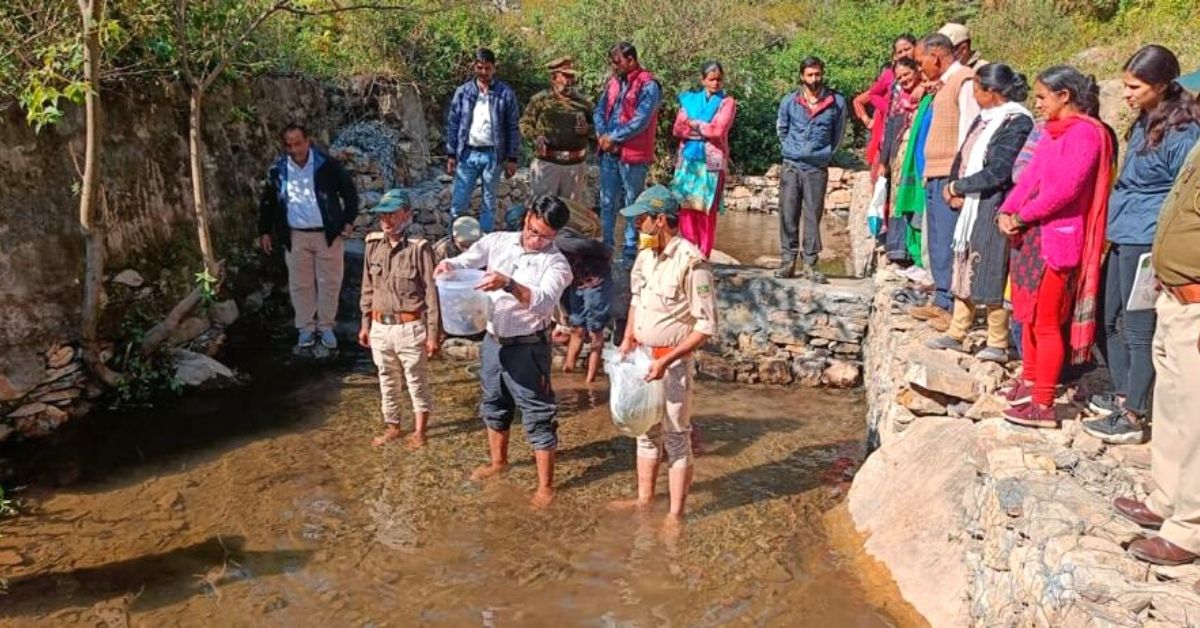
Dharam Singh says, “The river is fed by springs and streams along its length and merges with the Ganges at Shivpuri. Heval is one of the main rivers of the district Tehri Garhwal, providing potable water and for agricultural purposes. So, I decided to visit the villagers to hear their issues,”
His visit inspired him to work for the cause and rejuvenate the springs, giving a fresh lease of life to the river and helping thousands of people across the district.
Rejuvenating An Ecosystem
“The farmers shared that their crop production had drastically reduced owing to the drying up of springs. The farmers earlier harvested four crops a year. But over the years, the production was reduced to two. Moreover, the villagers had started relying on water tankers to meet their daily requirements,” he says, adding, “There was unplanned deforestation over the years. Nature was overexploited and needed repairs.”
Dharam Singh says that the drying springs also affected the traditional water sources and pond structures, filled by springs around the area.
“However, there is not much work available on spring revival in the Himalayas. I came across a case study from Sikkim, but there was no major reference that highlighted detailed research and approach taken to recharge and revive the groundwater sources,” he says.
A survey was launched to understand the hydrogeology of the region and the steps required to rejuvenate the springs. “It needed a more scientific approach than to execute a superficial and temporary relief scheme,” he shares.
The officer roped in NGOs, and other national institutes like IIT-Roorkee, National Institute of Hydrology, Roorkee, Centre for Education Development Action and Research (CEDAR) and Centre Soil and Water Conservation, Research & Training Institute (CSWCRTI), Dehradun.
The survey continued for a year until the springs, streams, water catchment areas, and river channels were mapped.
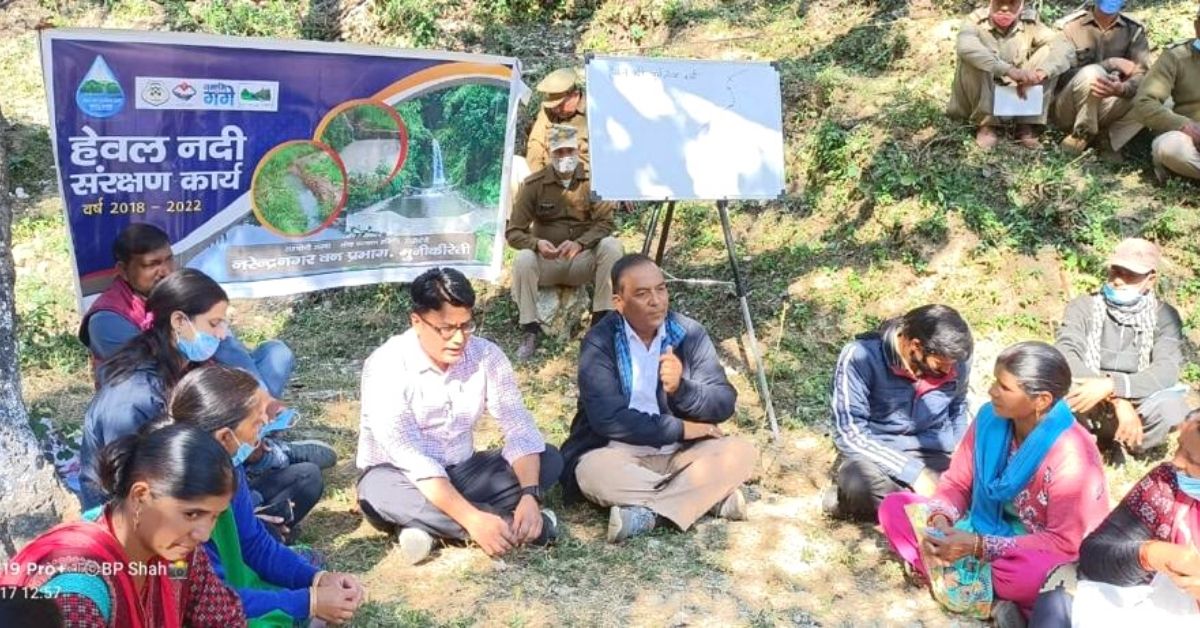
Dr Anvita Pandey, a scientist at CEDAR, says, “A total of 66 springs and 17 streams were identified, along the 50 km stretch of the river. The key issues documented were the decrease in discharge rate of the springs due to increase in the sediment load of the river.”
Dr Anita says the decrease in water was more in the non-monsoon months, leading to acute water scarcity and affecting the livelihood and increased migration.
However, the project required heavy monetary investment and human resources for restoration work. “The villagers were mobilised for the process,” she adds.
Speaking about the rejuvenation work, Dr Anvita explains, “The work was executed in two phases. The first stage involved spring-shed treatment, stream-shed treatment and afforestation. It also included collaborating with other organisations for expertise. It included recharging the areas and reducing the siltation of the river.”
Dr Anvita adds that the villagers planted about 10 lakh trees of local species to increase the vegetation in about 640 hectares of land.
The latter phase involved riverfront management and riverfront development. “It includes all aspects of river landscape revival, scientifically recreating natural systems to assist water flow and restoring the ecosystem. The execution also entailed creating convergence systems to ensure reliable and sustainable water supply for the future,” Dr Anvita says.
The holistic approach and interventions helped to have massive benefits. Today, the revived springs and streams benefit over 1 lakh people across 23 villages.
“The forest department extended the rejuvenation work to create additional recharge 39,529 water harnessing structures, contributing to 865.86 lakh litres of groundwater augmentation. The water structures include roadside water filtration tanks, recharge pits, pipelines to divert from water catchment areas to springs. The move helped to increase discharge levels in 23 other springs,” Dr Anvita says.
Preserving nature
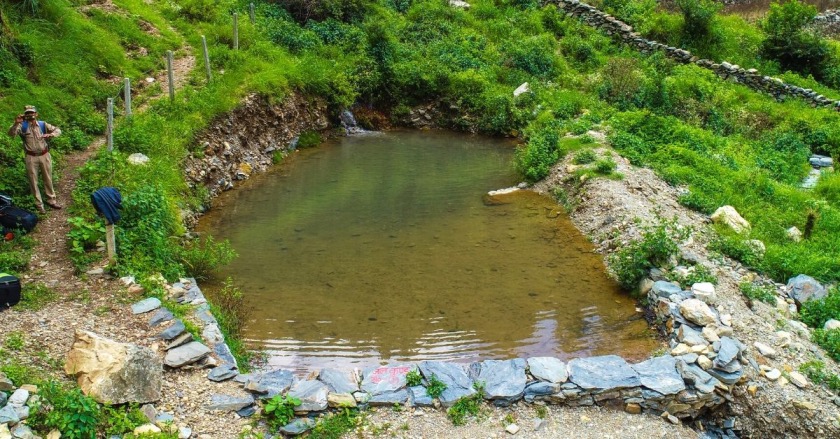
The overall interventions have solved the water crisis and also generated livelihood opportunities in the process.
Guru Prasad Dabral, former gram pradhan of Bhaitusan village, says the villagers have benefited immensely from the rejuvenation work. “The women spend less time at the springs to fetch water. Earlier, they spent an hour on a bucket of water which has now been reduced to half an hour. The increase in quality and quantity of water in springs have helped farmers increase the agriculture production by 30 per cent,” he says.
Guru Prasad says the added benefit is that the farmers who had quit farming have resumed the activity on their land and no longer need to migrate during the summer months. “The groundwater levels have increased, and the villagers are confident that the aquifers underground will replenish better with the water recharging structure,” he adds.
Dharam Singh says that all the springs have been GIS mapped to maintain transparency and monitored in real-time. “Preserving and protecting each stream is a challenge and crucial for the coming decades,” he says.
Speaking of the financial support, Dharam Singh says, “The forest division generated employment through the Mahatma Gandhi National Rural Employment Guarantee Act (MGNREGA). Financial aid was sourced from the Compensatory Afforestation Fund Management and Planning Authority (CAMPA), Uttarakhand, and additional funds from Japan International Cooperation Agency (JICA) District Mining Authority (DMA) and others.”
Overall, the forest officer says he is satisfied to have been able to help. “The result is a commendable achievement, and I feel glad that thousands of villagers have benefited from the initiative and will continue to do so for the long haul,” he adds.
Edited by Yoshita Rao
This story made me
- 97
- 121
- 89
- 167
Tell Us More
We bring stories straight from the heart of India, to inspire millions and create a wave of impact. Our positive movement is growing bigger everyday, and we would love for you to join it.
Please contribute whatever you can, every little penny helps our team in bringing you more stories that support dreams and spread hope.






